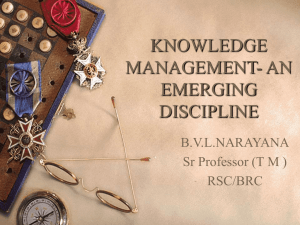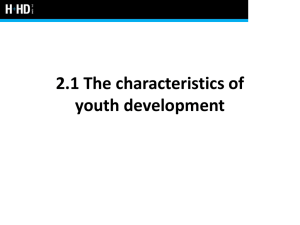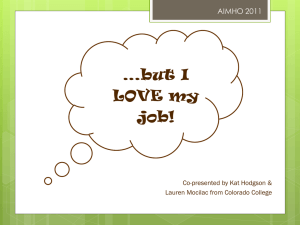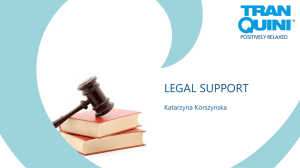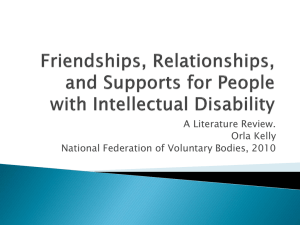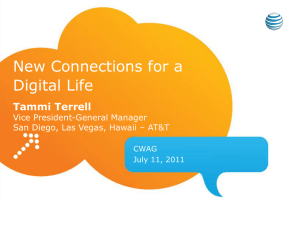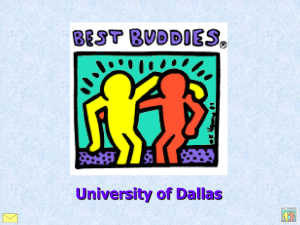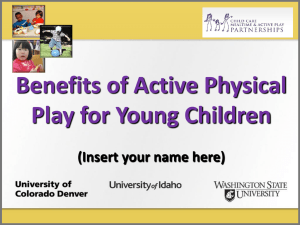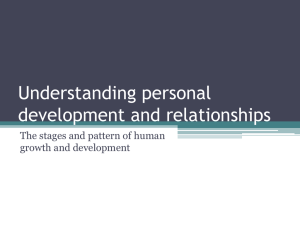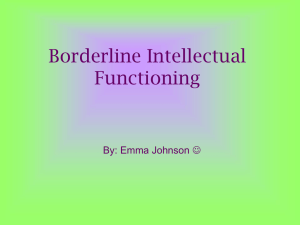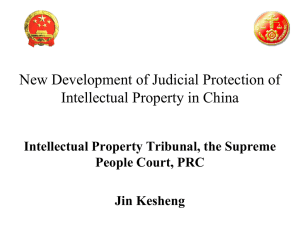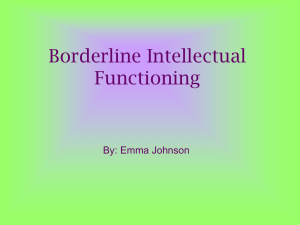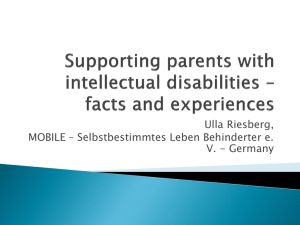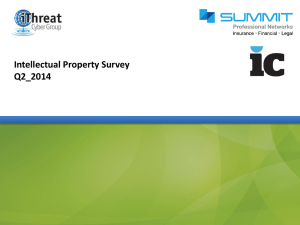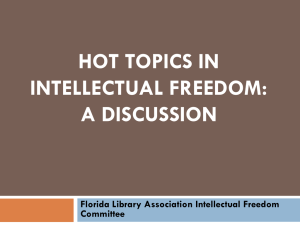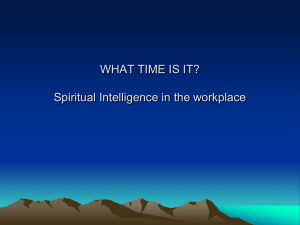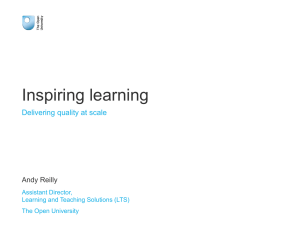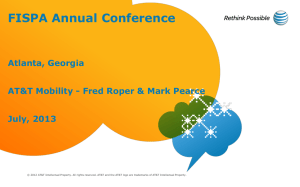Intellectual Property - CVH TV, Film and Digital Media Ms. Copeland
advertisement
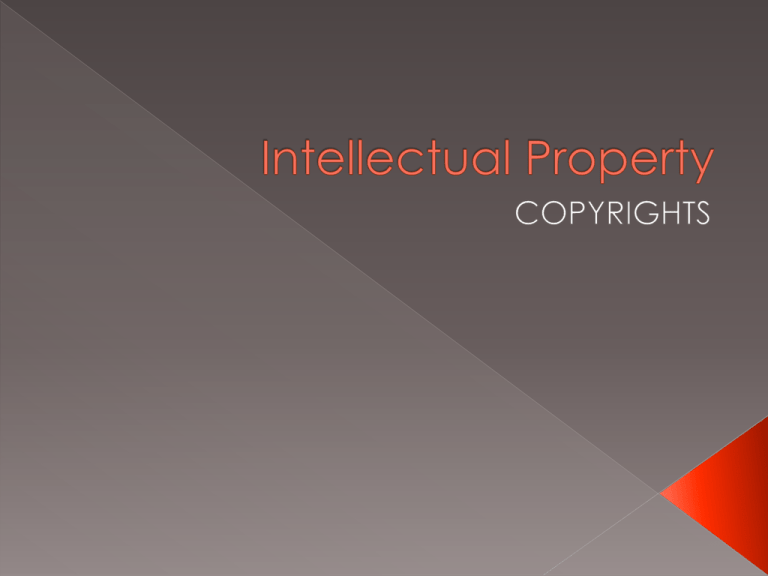
By the end of the presentation, you should: › Be able to define and give examples of intellectual property › Explain the basics of Copyright Law Know the four (4) rights granted by copyright › Know how to post copyright notice › Know which copyright symbols to use when (© or ℗) › Understand Fair Use Law Copy the following words into a Word document and write their definitions. › WRITE THE DEFINITIONS IN YOUR OWN WORDS. 1. intellectual property 2. copyrights 3. derivative works 4. distribution rights 5. publishing rights 6. transmission rights 7. copyright notice 8. copyright symbol 9. copyright infringement Raise your hand when finished. I will grade the assignment on screen. Intellectual Property Basics › Key terms: intellectual property, copyrights Copyrights Copyright Law › Key terms: derivative works, distribution rights, publishing rights, transmission rights Copyright Symbols › Key term: copyright notice, copyright symbol Copyright Terms Intellectual Property Ownership › Key term: copyright infringement Fair Use Law Intellectual Property refers to creations of the mind. It is the original, creative work of an artist or inventor. Intellectual Property includes such things as songs, novels, artistic designs inventions, symbols names and images used in commerce. Intellectual Property may be registered for special government protections - including copyrights, patents, trademarks and trade names - that provide businesses or individuals with the exclusive right to use and profit from the property they have created. Have you ever created a piece of intellectual property? What questions come to mind when you hear the word copyright? If you own intellectual property, do you think having it copy written will help you? Why? Why not? When most people think of the word, “copyright,” they think about the rights of owners to control access to their intellectual property. This is accurate, but it is not the whole story. The U.S. Constitution says, the purpose of copyright is to promote the spread of knowledge and innovation. The writers believed that encouraging the development of new ideas and information serves society as a whole. A copyright is a form of intellectual property law that protects original works of authorship, including literary, dramatic, musical and artistic works. A copyright lists the publisher of a work and the year in which the work was published. All books must have a copyright. Copyright Law does not protect facts, ideas, systems, or methods of operation. As soon as something is created, copyright is automatically implied - no copyright notice or procedures are required; however, registering works of intellectual property not only protects the owner from unauthorized usage but can also provide greater rewards should litigation become necessary. How do you think the internet affects intellectual property? Do you think the internet has affected the economic value of intellectual property? If so, how? The Internet and other digital technologies have made it easier than ever to share, use, copy, modify and distribute still and moving images, and sounds that are the “intellectual property” of others. There are people who believe that intellectual property should be unprotected and unrestricted. They, like the original writers U.S. Copyright Law, believe that individual creativity serves society as a whole. Those at the other end of the spectrum feel that the government should strengthen and enforce laws to protect intellectual property better. The key issue here is about producer rights and user rights; a balance between public and private interests. Copyright means that you control the rights to a bundle of rights, including rights to: › (1) to make copies the copyrighted work › (2) to make modifications based on the original work (called derivative works) › (3) distribute copies of recordings of the work to the public by sale, rental, or leasing (distribution rights) › (4) present literary, musical, and audiovisual works to the public (publishing rights) › (5) present digital audio transmissions of certain sound recordings (transmission rights) You can unbundle, split, sell, or license these rights in a variety of ways. › EXAMPLES: you can sell rights for a certain period of time (a five-year license) sell rights to a territory or in a language (sales in France, sales in the French language) sell rights to a medium (distribute on cable TV or sell on videotape) The copyright symbol, designated by ©, is the symbol used in copyright notices for works OTHER than sound recordings. In the United States, the copyright notice consists of: › the © symbol, or the word "Copyright" or abbreviation "Copr.”; › the year of first publication of the copyrighted work; and › an identification of the owner of the copyright. EX: © 2015 Shadow Illusions The sound recording copyright symbol, ℗ , is used to designate copyright for sound recordings. EX: ℗ 2015 Elsibu Music Productions As a general rule, for works created after January 1, 1978, copyright protection lasts for the life of the author plus 70 years. For an anonymous work, a pseudonymous work, or a work made for hire, the copyright endures for a term of 95 years from the year of its first publication or a term of 120 years from the year of its creation, whichever expires first. When using copy written works that belong to someone else, first, you must have their permission, second, you must give them credit for the work. Copyright infringement is the use of works protected by copyright law without the owner’s permission. If copyright protection lasts for the life of the author plus 70 years, what do you think happens to the intellectual property afterwards? Why would asking someone’s permission to use their intellectual property and giving credit to the owner be important? Fair Use Law - an author may make limited use of Uses That Are Generally Fair Uses another author's work without asking permission. › Criticism and comment Quoting from a work in a review or essay. › News reporting › Research and scholarship Quoting a short passage in a scholarly, scientific, or technical work for illustration or clarification › Nonprofit or educational uses › Parody Drawing elements from a work for the purpose of imitating it in a comic way. There are four factors courts weigh in determining whether an unauthorized use of copyright material is permitted under fair use: › (1) the purpose and character of use are you creating something new or just copying the work? › (2) the nature of the copyrighted work Four Court Factors continued ~ › (3) the amount and importance of the work used despite common myths there is no 8-bar rule for sampling music, no 30-second rule for using video clips, and no oneparagraph rule for using text › (4) the effect of the use on the (potential) market for or value of the work, considered as if the use was widespread. http://www.nationaltechcenter.org/index.php/2007/03/04/copyright-and-fair-use-faqs/ In this presentation we discussed: › Intellectual Property › Copyrights › Copyright Law › Copyright Symbols › Copyright Terms › Intellectual Property Ownership › Fair Use Law Define and give an example of intellectual property. What does Copyright Law protect? Name one of the four (4) rights granted by copyright. What three (3) items are included in a copyright notice? When do you use the ℗ copyright symbol? How does the Fair Use Law apply to your school projects? Working in pairs, think about your favorite artist (writer, music / film / TV producer, director, actor, songwriter,/ composer, band or musician). Have they ever been sued for copyright infringement? If so, briefly (1 – 2 paragraphs) state the accusation made and the parties involved. Provide evidence, based on what we covered about copyright law in class, that explains why you agree or disagree with the accusation. › If your favorite artist has never been sued, find someone in audio or video who has. Submit your work (with both names on it) to the Jupiter Grades drop box for the Copyright Infringement assignment.
